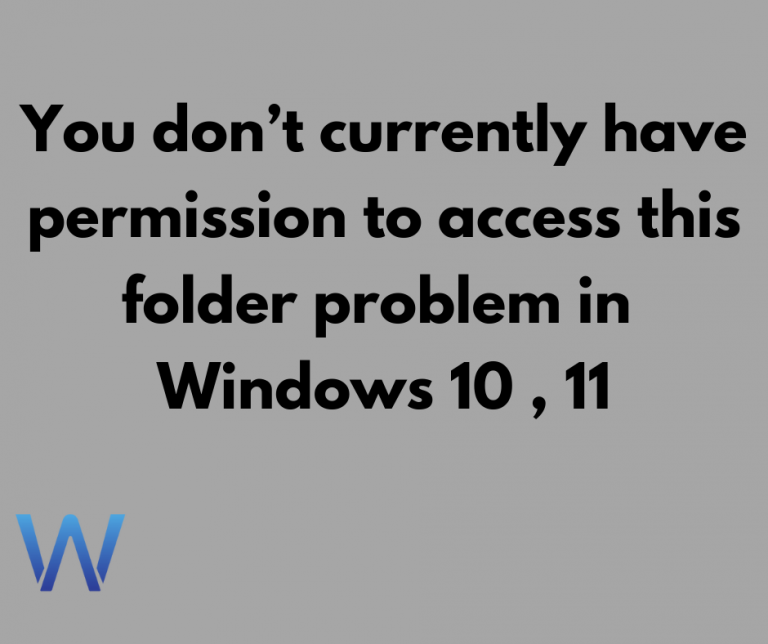
If you’re running Windows 11 or 10, you can get the notice “You don’t have permission to open this folder right now.” attempting to access your computer’s files Don’t worry, if you follow these steps, the problem will be solved quickly.
Fix – 1 Modify the Permission of the problematic folder
Changing the permissions of the problematic folder will undoubtedly solve the issue.
1. Press Windows+E on your keyboard.
2. Next, go to the file/folder location on your computer.
3. Right-click on the file in question and select “Properties.”
4. Select “General” from the drop-down menu.
5. In the General section, select “Location:” and hit ‘Ctrl+C’.
7. Close the File Explorer application.
8. After clicking the Windows key+R to launch Run, type “cmd” and then press Ctrl+Shift+Enter.
This will open the Command Prompt with administrative privileges.
9. Paste this command into the Command Prompt window, make any necessary changes, then hit Enter to run it.
[Insert the path of the file you copied previously in lieu of ‘path of the file’.
For example, we will acquire ownership of the folder ‘Zoom’ located at “C:UsersSambitDocuments.” The command will so be –
After that run the command given below
Once you’ve completed the command, close the Command Prompt window.
You should be able to open the folder on your computer without difficulty. The problem will be fixed.
Fix 2 – Modify Local policy settings
You must change your system’s local policy settings.
1. On your keyboard, press the Windows key combined with the ‘R’ key.
2. Next, type this line and then click “OK.”
3. Go to this location once the Local Group Policy Editor page displays on your screen:
Security Options > Local Policies > Computer Configuration > Windows Settings > Security Options
4. Next, check for the “User Account Control Admin Approval Mode for the Built-in Administrator account” on the right pane.
5. To change it, simply double-click it.
6. To turn off the settings, select the radio button next to “Disabled.”
7. To save the settings, simply click “Apply” and “OK.”
8. Next, check for the “User Account Control” option. Admin Approval Mode” policy settings for all administrators.
9. Set the policy setting to “Disabled,” much like the previous policy settings.
10. To save the changes, you must click “Apply” and “OK” once again.
Close the Policy Editor window once you’ve finished altering the settings. Restart your computer to ensure that these modifications take effect.
Fix 3 – Give permission to everyone
It’s possible that the folder you’re trying to access lacks sufficient user access.
1. Press Windows+E on your keyboard.
2. Open File Explorer and navigate to the file/folder you want.
3. To change the properties settings, right-click on the troublesome one and select “Properties.”
4. Select “Security” from the drop-down menu.
5. Select “Advanced” from the Security tab.
6. Finally, select “Change.”
7. In the ‘Enter the object name to select:’ box, type “Everyone.”
8. Finally, check the names by clicking once on “Check Names.”
9. Finally, press “OK.”
10. Finally, press the “OK” button.
11. Click “Apply” and “OK” in the Properties window.
12. Attempt to access the file/folder once more.
Fix 4 – Give full control to everyone
If the last way failed, try giving everyone complete control.
1. Right-click on the file and then select “Properties,” just as you did before.
2. Select “Security” from the drop-down menu.
3. Select “Edit” to change the authorization settings.
4. Look for “Everyone” in the ‘Group or user names:’ area. Choose it.
5. Finally, in the ‘Full control’ permission, check the “Allow” box.
This gives each user complete control over the file.
6. Finally, click “Apply.” After that, select “OK.”
7. Return to the properties screen and click “Apply.”
8. Click “OK.”
After that, try accessing the file/folder again and inspect it.
Fix 5 – Authorize your account to access it
Permitting your user account to access the folder specifically appears to work in certain cases.
1. Return to the folder’s original location.
2. To access it, right-click on it again and select “Properties.”
3. Select the “Security” option in the Properties box.
4. Select “Edit.”
5. After that, click “Add” to add your account.
6. In the Select User or Group dialogue that appears, select “Advanced.”
7. Finally, click “Find Now.”
8. Scroll down the list of groups or users until you find your user name. (It’s “Sambit” for this PC.)
9. Select “OK.”
10. Click “OK” one again.
This should have taken care of your problem.
Give the troublesome folder another chance. You will be able to access it this time.
Your issue must be resolved.